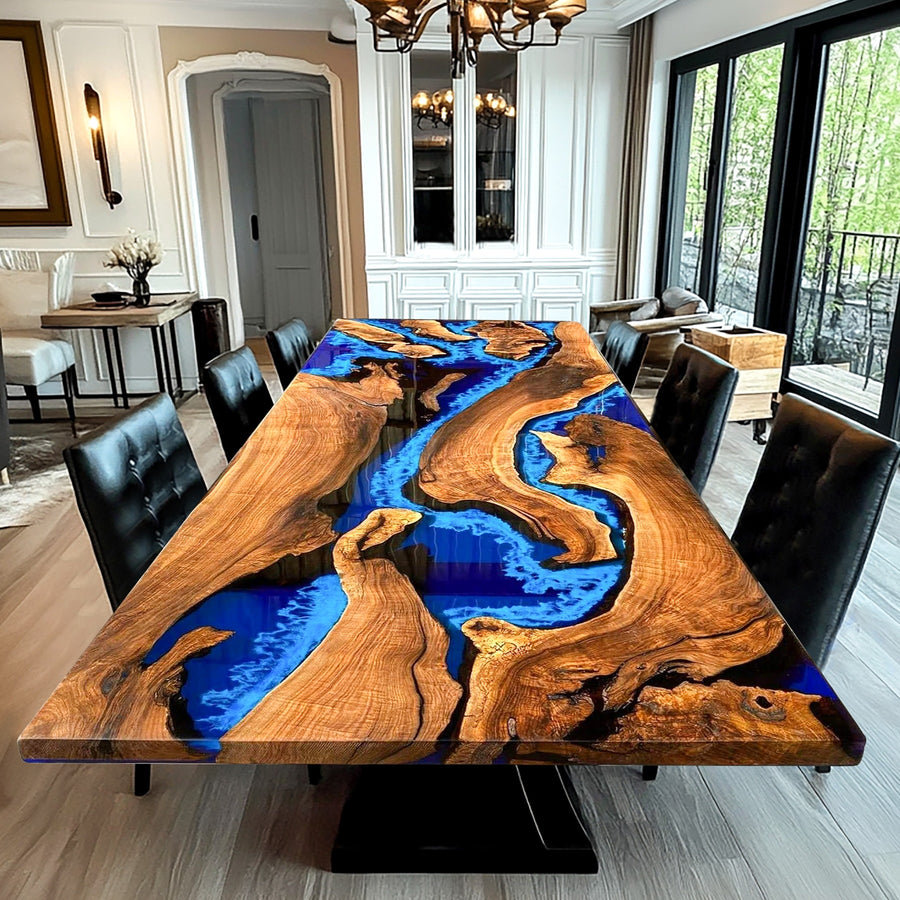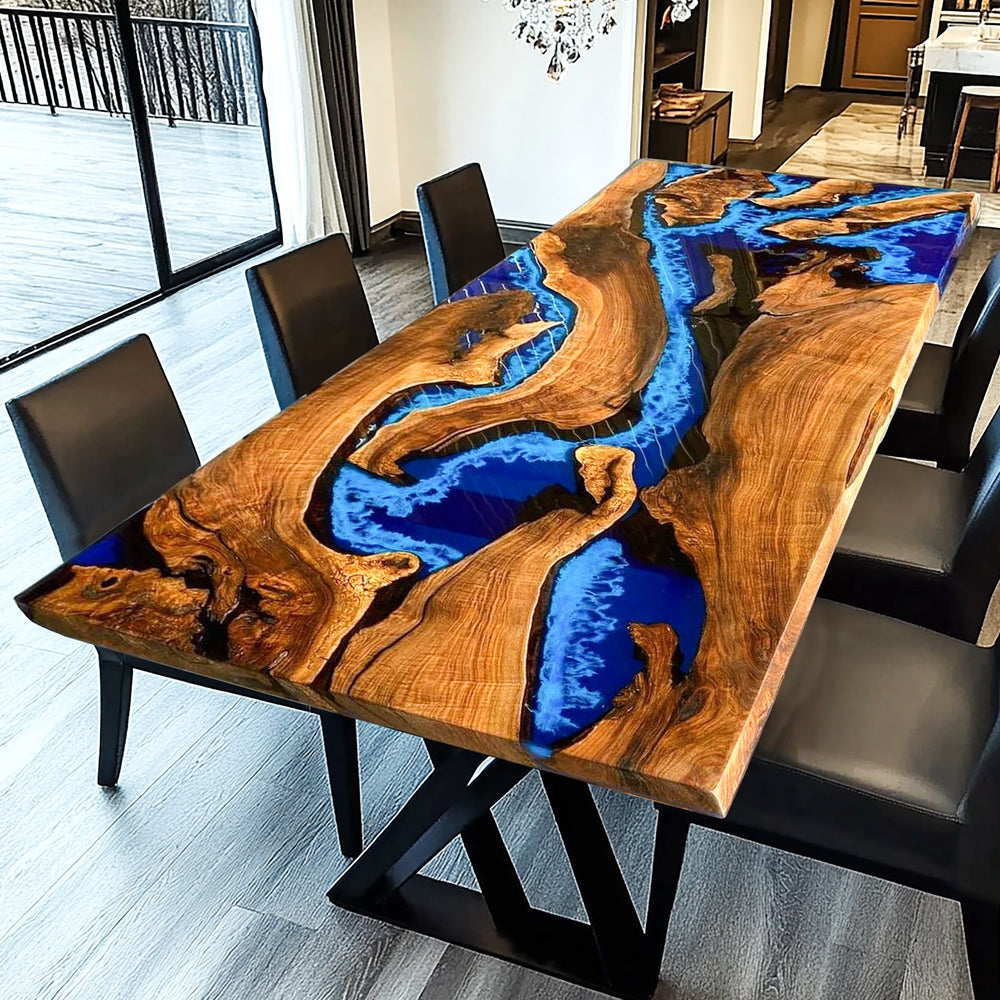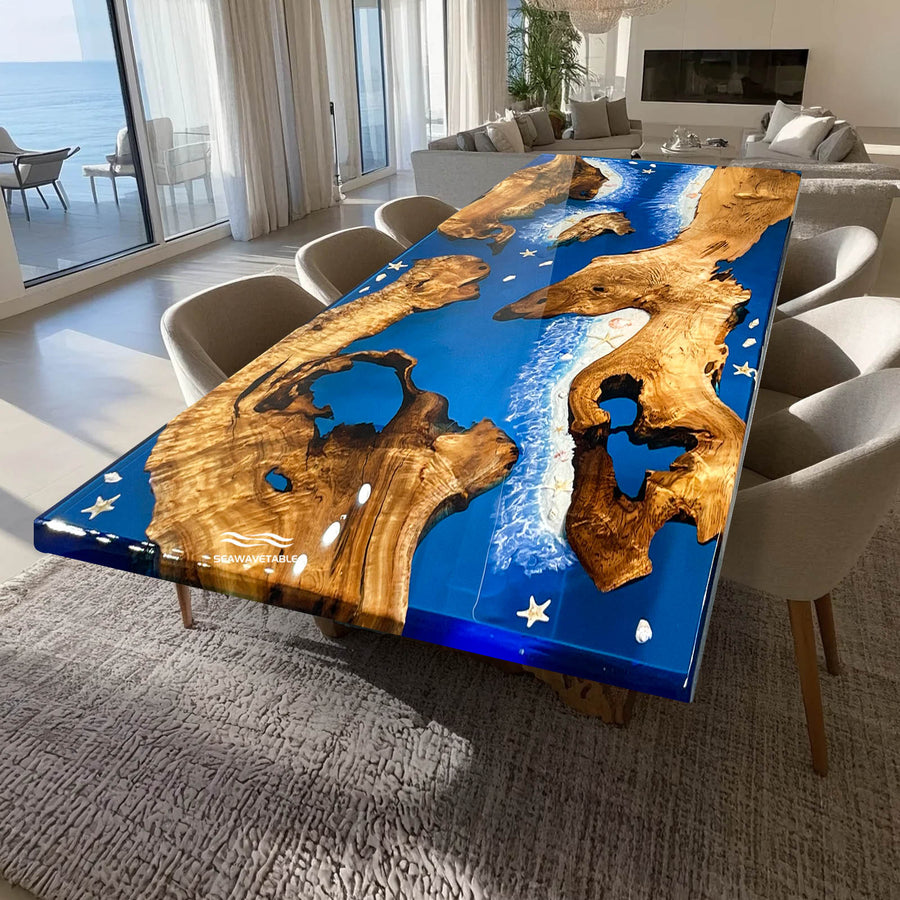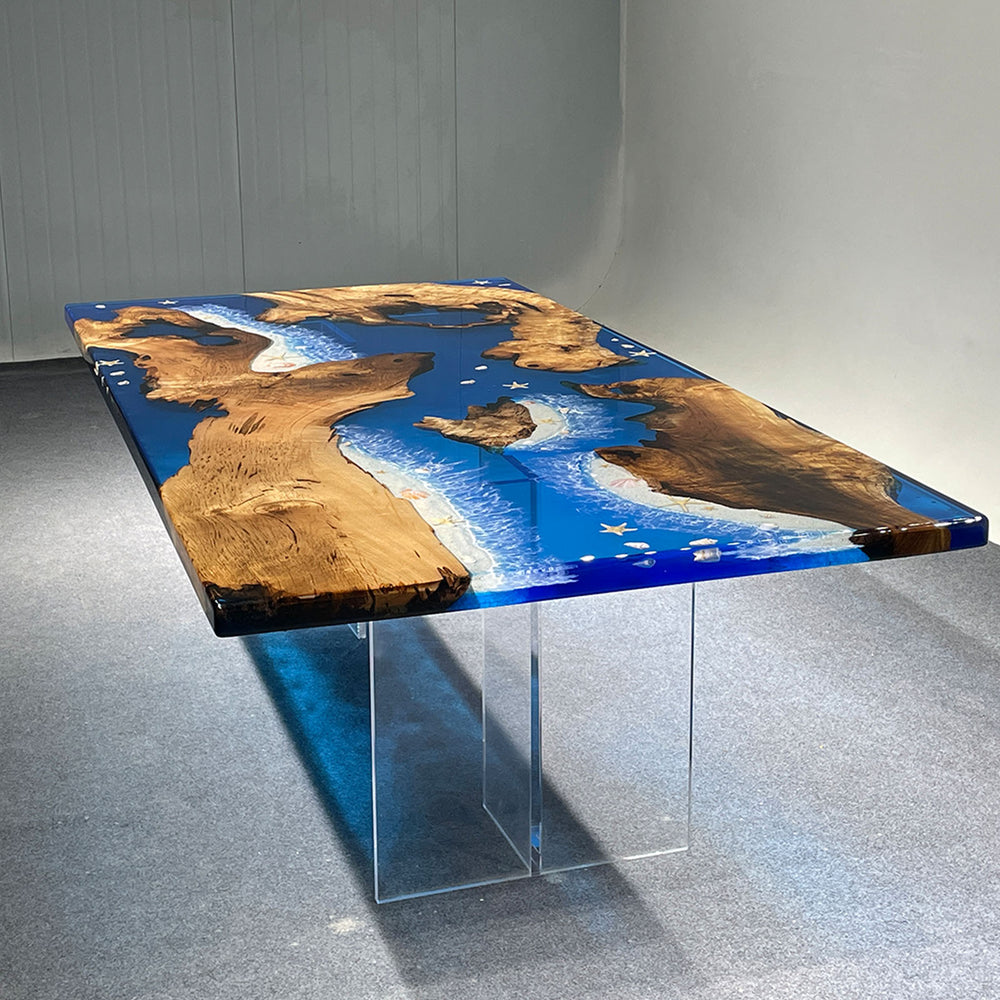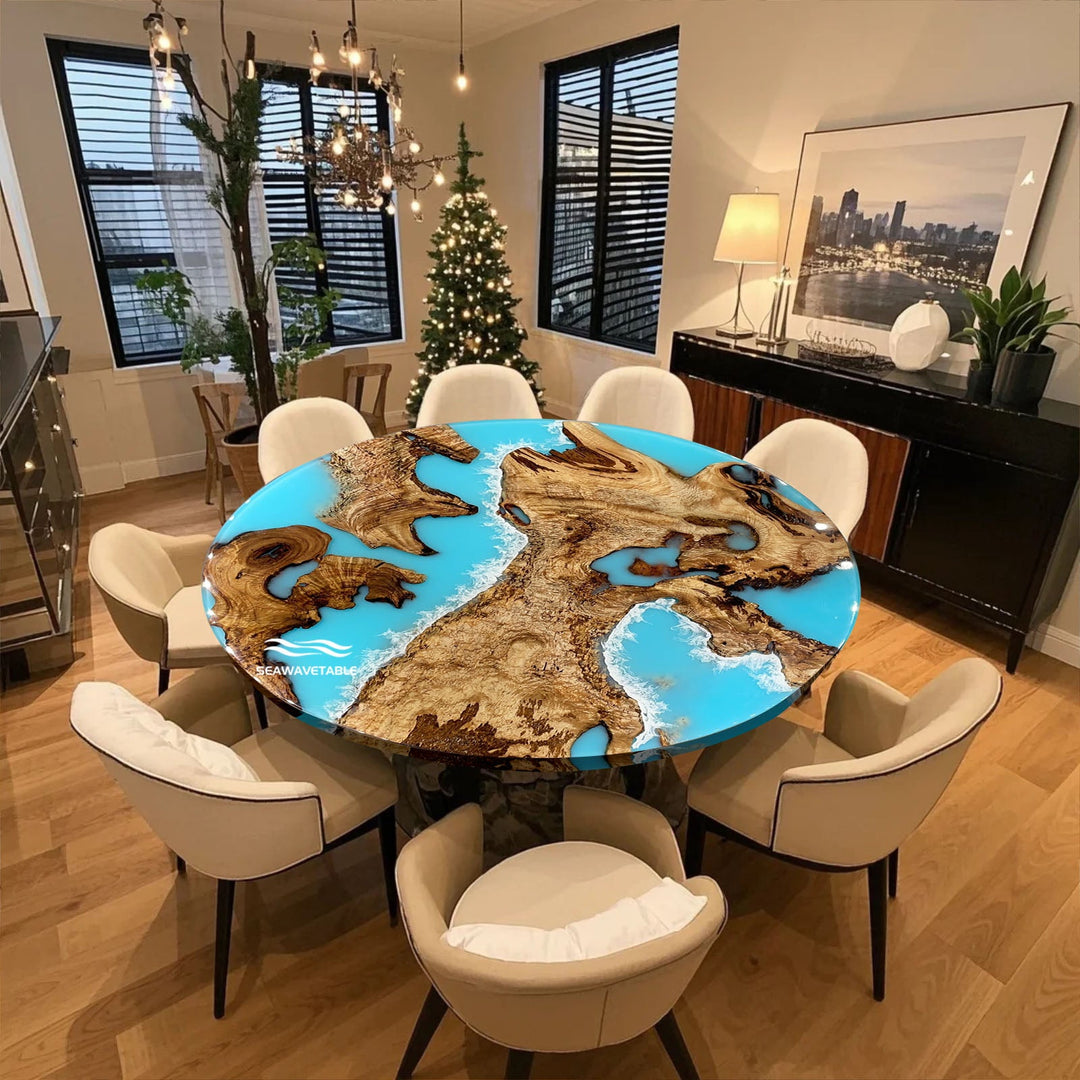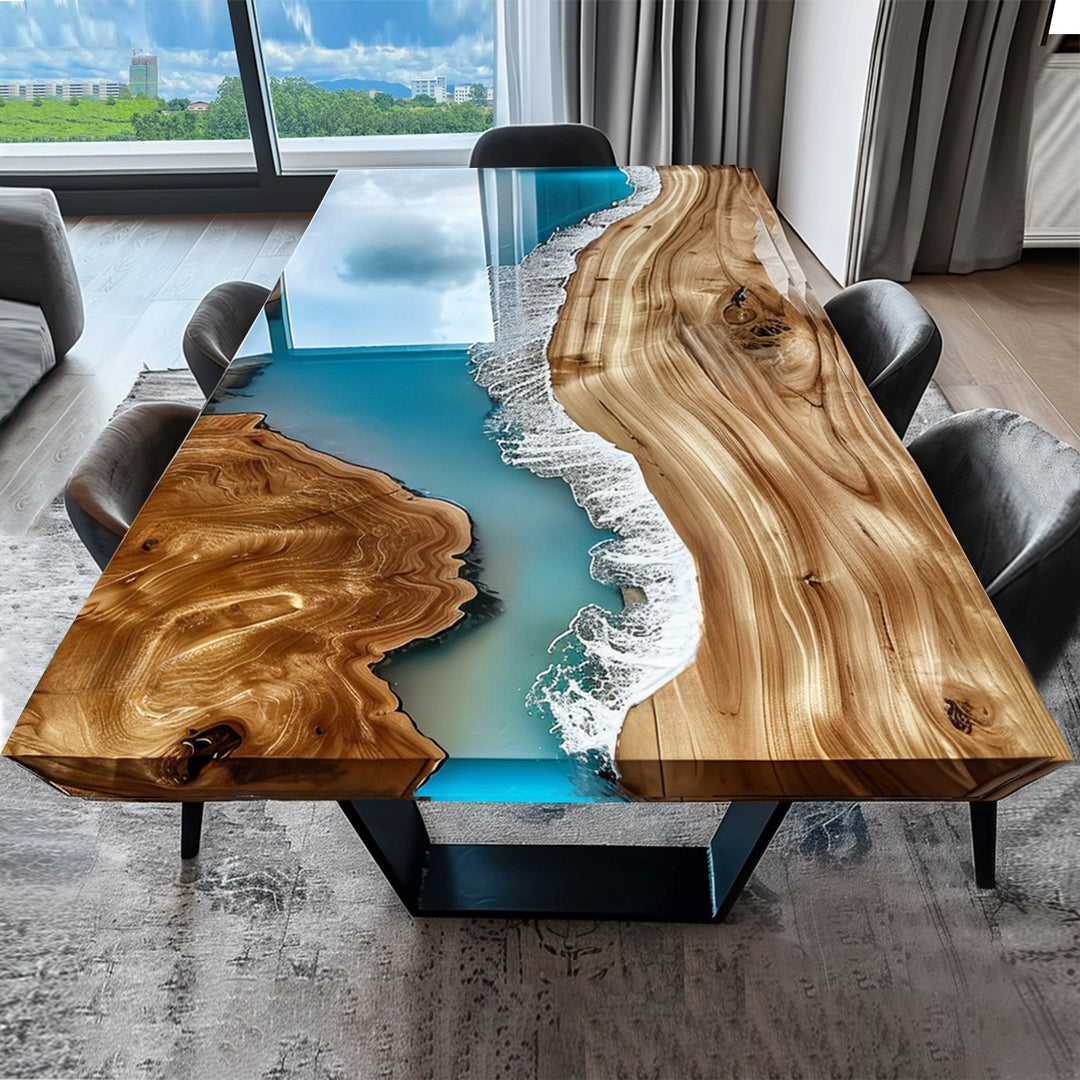Epoxy Table Daily Maintenance
Solid wood epoxy tables are more durable than ordinary furniture and require less frequent maintenance. Even if they develop some signs of wear over time, these marks are a natural part of the table's aging process. During production, the wood undergoes a thorough drying process, pest control treatment, and water resistance preparation. The surface is coated with wood wax oil, which is eco-friendly and enhances the natural texture of the wood, preserving its fine grain and character.
Maintain Ideal Humidity Levels
Wood naturally maintains a humidity level of 35%–65%, which is also the ideal humidity for human living environments. If the room’s humidity drops below 40%, lacks ventilation, or is exposed to high temperatures for long periods, the wood may crack severely. To prevent this, especially during autumn and winter, we strongly recommend using a hygrometer and a humidifier to control room humidity effectively, reducing the risk of cracking.
Avoid Prolonged Sunlight Exposure
Direct sunlight for extended periods can cause wood to oxidize and change color. Excessive heat from sunlight can also lead to cracking or warping of the wood due to temperature fluctuations. Position your table away from windows with intense sunlight or use curtains to filter the light.
Keep Away from Humid Environments
While wood is naturally durable, placing your table in overly humid environments can lead to surface mold or mildew. Avoid placing the table in areas prone to high moisture levels to preserve the integrity of the wood surface.
Stay Clear of Heat Sources
Keep the table away from high-temperature sources such as heaters, radiators, air conditioners, and appliances like ovens or grills. Excessive heat exposure can cause the wood to crack or deform, damaging the table’s structure.
Clean the Table Regularly
It's essential to keep the table free from water, dust, and stains. Regular cleaning with a soft, dry cloth will maintain its cleanliness and extend the table's lifespan.
Use Dry Wiping for Daily Cleaning
For routine cleaning, dry wiping is recommended. If there are stubborn stains, you can use a slightly damp cloth. However, be sure to avoid soaking the wood, as this can lead to warping or cracking over time.
Regular Waxing for Maintenance
To maintain your solid wood epoxy table, it is recommended to apply wood wax oil every three months, especially on the ends of the table where cracking is most likely to occur. Regular waxing helps protect the wood from drying out and ensures long-lasting durability.
Natural Plant-Based Wood Wax Oil from Seawavetable
At Seawavetable, we use natural plant-based wood wax oil to protect the surface of the table. This oil penetrates deeply into the wood, allowing you to feel the grain and smooth texture of the wood. Over time, the wood develops a beautiful patina, becoming warmer and more characterful with age.
Since the surface has no additional coating layer, it may not be highly resistant to scratches or stains. However, small scratches and blemishes can add to the table’s charm, contributing to its story over time. For those who prefer a more polished look, customers can sand the table themselves to remove any marks.
Note: We use German-made natural plant-based wood wax oil, which is child-safe once dry. For maintenance, we recommend continuing with the same oil. Avoid using cooking oils, which can lead to mold growth. You can purchase Saicos wood wax oil directly from the Seawavetable website.
Sanding and Refinishing
Over time, your table may require refinishing. Below are the steps for sanding and reapplying wood wax oil based on the current condition of your table.
1. Sanding
Depending on the level of wear, sanding can be done in two ways:
-
For light surface scratches: First, wipe the table with a cloth to remove dust. If you encounter any rough spots or uneven areas, gently sand them with 600-grit sandpaper.
-
For deeper stains or scratches: Use 320-grit sandpaper to sand away most of the blemishes, though some burn marks or deep cuts may be harder to remove. Afterward, use 400-grit sandpaper to smooth the surface further, then finish with 600-grit sandpaper to ensure an even surface.
Note: Always sand along the grain of the wood. Once sanding is complete, clean the surface with a cloth to remove any remaining dust.
2. Applying Wood Wax Oil
After sanding, the table may appear rough. Don’t worry—after dusting off the surface, you can apply wood wax oil. Use a lint-free cotton cloth to apply the wax evenly, following the wood grain. Start by waxing the edges and ends, then move on to the center of the table. Pay extra attention to the end grain of the wood, which tends to dry out more quickly.
3. Drying
Let the table sit for 1–2 minutes before wiping away any excess wax with a clean cotton cloth. The surface will be dry to the touch within three hours, but full curing takes about 72 hours.
4. Final Touches
Once the table is fully cured, you can lightly sand the surface again with 1000-grit sandpaper for an extra smooth finish. Apply a small amount of wood wax oil for a refined, long-lasting shine.
At Seawavetable, we are dedicated to ensuring the longevity and beauty of our epoxy resin tables. Regular maintenance using our recommended products, such as Saicos wood wax oil, will help preserve your table’s natural beauty and protect it for years to come. For more information or to purchase maintenance products, visit the Seawavetable website.


